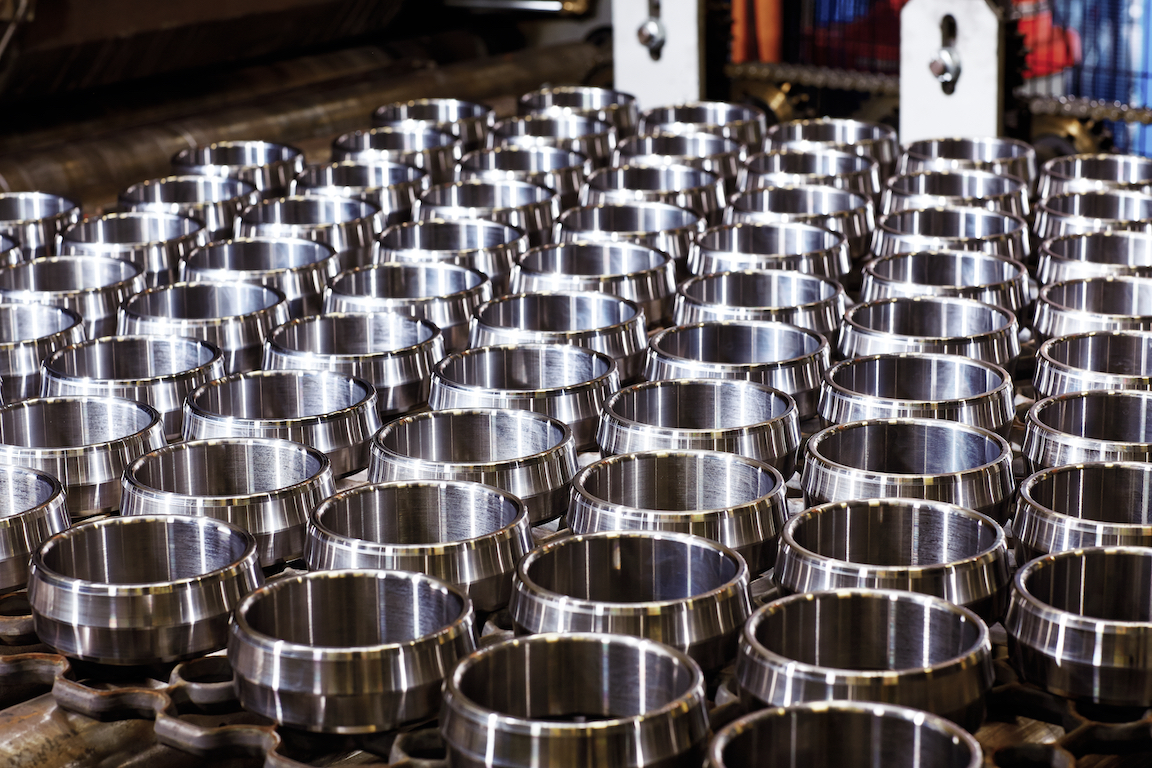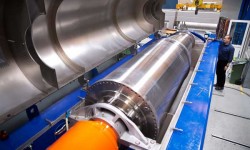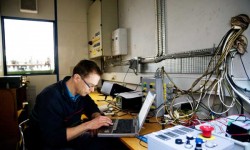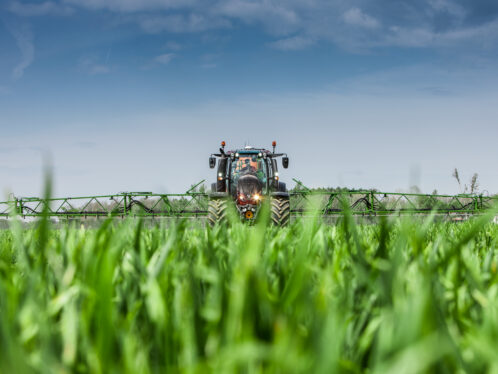
THE PURSUIT OF PURITY
Wine, clean water and oil are amongst the many commodities whose production requires the removal of solids from liquids. Alfa Laval’s decanter centrifuges perform this task efficiently, harnessing forces of up to 3,500 times that of gravity.
Many important industrial processes require the separation of solid particles in suspension from a liquid. These include wastewater treatment, oil production and winemaking, to mention a few. The end product is typically the cleaned liquid, but it can also be the solids that remain following separation, as is the case with soy production. If time isn’t a factor, gravity can be used to separate the required elements. If you keep the suspension stagnant in a sedimentation vessel or pond, the particles will eventually sink to the bottom. A faster option, however, is to run the suspension through the bowl of one of Alfa Laval’s decanter centrifuges. “The bowl rotates with a periphery speed of 100 to 110 metres per second,” says Bent Madsen, process and technology manager at Alfa Laval’s product centre for decanters in Copenhagen, Denmark. “Because of that we get heavy centrifugal forces inside – between 3,000 and 3,500 times the force of gravity.” One of Alfa Laval’s latest and largest decanters is the Lynx 1000, with a hydraulic flow rate of 540 cubic metres per hour. As we visit the assembly line, a unit towers over us in the pre-delivery testing section. The Lynx 1000 is almost 9 metres long and more than 2 metres high, and weighs 18.5 tonnes. It is powered by two electric motors, the largest with a rating of 330 kilowatts. Earlier along the assembly line are components for several decanter models in various stages of completion. Everything is neatly organized, with the stages separated by yellow stripes on the glossy grey floor. In one section is a decanter bowl. Made of high-strength duplex steel, it looks like a big shiny cylinder. It has an end piece with a ring of discharge ports at one end and an end piece with a conical section with an opening at the other end. Decanter bowls can have an inside diameter of 0.2 to 1 metre and a length of up to four times that. The size depends on the application. On an assembled decanter there is a screw conveyor inside the bowl. Both rotate very rapidly, in some cases up to 5,000 revolutions per minute, but the conveyor is rotating slightly slower than the bowl. The differential speed is between one and 50 revolutions per minute, depending on the media being separated. With the bowl-conveyor combination spinning, the suspension is fed into the decanter through a central feed tube. The centrifugal forces push the suspension towards the inside of the bowl, separating the solids from the liquid. As the solids build up in a layer, the screw conveyor scrapes them out at the conical end of the bowl. The growing pool of clarified liquid is discharged at the other end through ports in the end piece, serving as thresholds to the liquid pond. This is a continuous process enabling volumes of suspension to be processed in a shorter time than would occur with regular sedimentation. The result in a specific application is determined by the combination of rotational speed, differential speed and the geometry of the decanter. Lynx 1000 is the first decanter centrifuge in a whole new generation from Alfa Laval and handles a flow of up to 540 cubic metres per hour. It has been specially designed for abrasive solids in the oil and gas industry with longer service life than earlier generations. To prevent ingress of contaminants in the main bearings, Alfa Laval’s design team wanted to lubricate them with grease. That turned out to be a challenge. “According to the SKF General Catalogue it was impossible to run at the speed and loads we wanted with grease lubrication,” says gear specialist Lauge Svarrer. “We had to find a way to lubricate these fast- rotating bearings at a stable temperature,” says development engineer Kristoffer Sjögreen who monitored the tests. It was all about striking the right balance. SKF application engineer Peder Dalgaard says “You can do that if you take everything into account: tolerances, the right amount and type of grease, bearing system design and the running accuracy of the bearings. In this case the grease is SKF LGHP 2 and the bearing system has a deep groove ball bearing and a cylindrical roller bearing in separate bearing housings.” The result is a high level of bearing optimization. Says senior development engineer Frank Fiddelaers, “This project has led to very stable performance of grease-lubricated roller and deep groove ball bearings under heavy loads at all encountered process temperatures, with speed factors above 500,000 n x dm.” Grease at high speed
This led to a five-year series of laboratory experiments and bearing system optimization in close cooperation with SKF. Alfa Laval built a special test rig where different combinations of operating parameters, bearings and greases could be evaluated.
Dr Jan Cederkvist, manager of product validation, says “A small temperature peak when you inject the grease is normal. But we don’t want to see excessive peaks that can be dangerous for the bearings. It must always be a reliable and robust design.”







